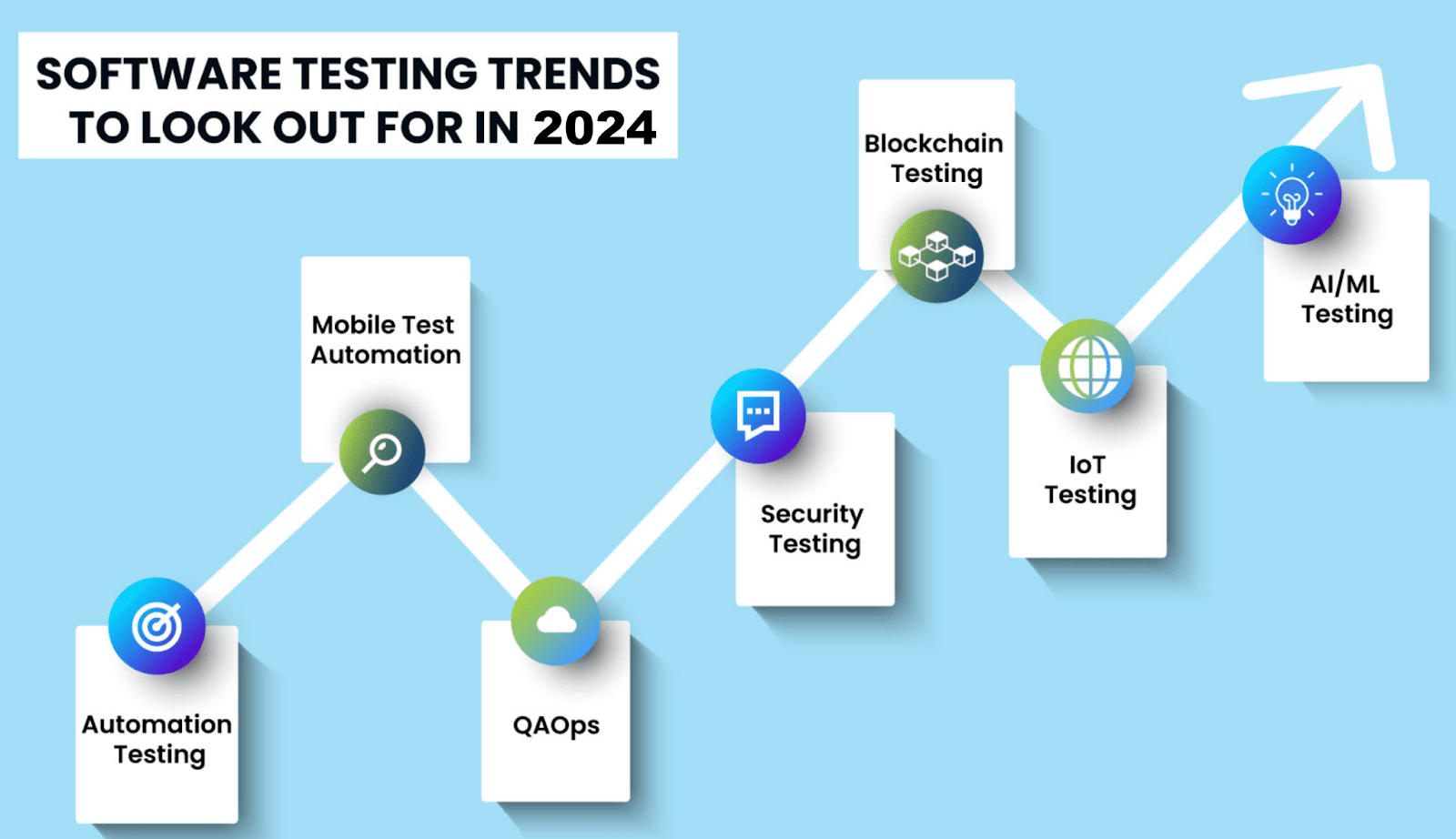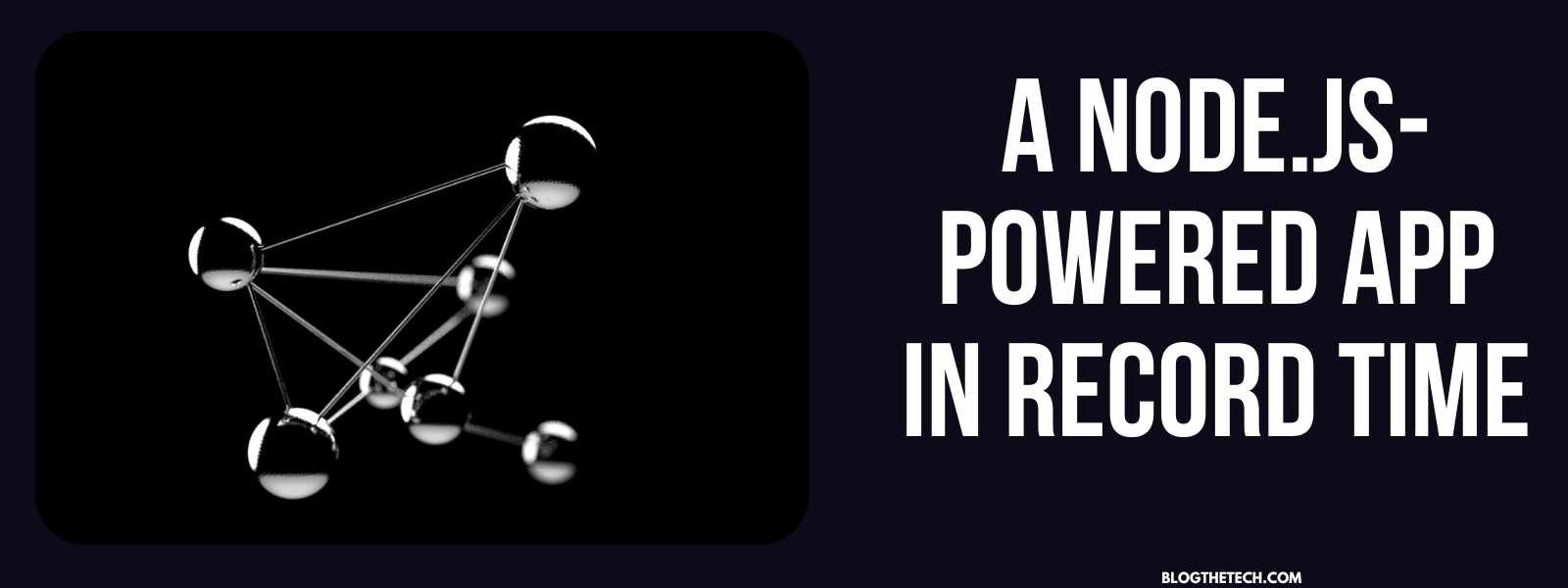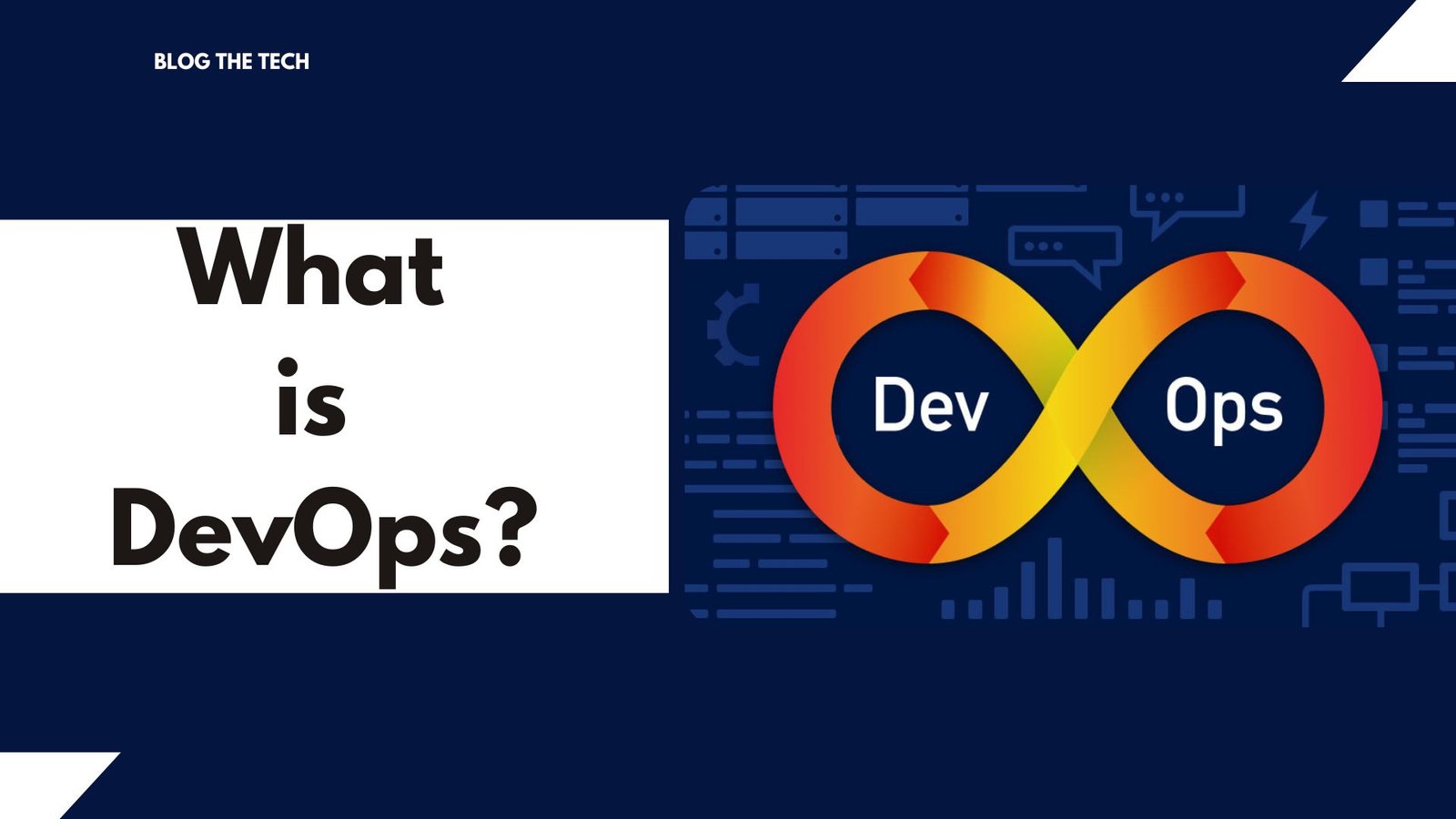Peering into the future, it becomes evident that the landscape of QA software is poised for substantial transformations. Fueled by the swift progress of technology and the growing intricacies of engineering, the methods employed have been undergoing a noteworthy evolution. Moreover, the extensive workforce restructuring observed these past years might — unexpectedly — impact your organization’s processes positively. In this piece, we’ll delve into these anticipated shifts and explore their implications for the methodologies employed in ensuring quality.

First things first: what does QA stand for in software?
What is qa in software, exactly? Quality assurance serves as a linchpin in the meticulous process of ensuring that programs satisfy the specified quality benchmarks. These are typically derived from a combination of industry best practices, regulatory requirements, and the specific needs and expectations of the stakeholders. They are often explicitly detailed in documents such as the project requirements specifications, quality assurance plans, and, in some cases, regulatory compliance documentation.
The set of guidelines and benchmarks against which the performance, functionality, and resilience are measured, guarantees that the resulting program aligns with the defined criteria and consumer anticipations. This is accomplished by means of a comprehensive array of activities, ranging from thorough testing to intricate debugging and vigilant defect tracking.
The habitual waterfall tactic held sway for numerous years as the prevailing approach. However, the impetus for the shift towards agile methodologies stemmed from the escalating pace of market changes. Changes ceased to be disruptions but evolved into welcomed adjustments aimed at crafting successful solutions.
This trajectory of heightened flexibility and the compression of the “launch timeframe” persists. The duration from formulating a requirement to the long-coveted release is steadily contracting, and the increments in engineering are diminishing in size. The imperative for success in the contemporary and future landscape is synonymous with the urgency for augmented adaptability and rapidity compared to competitors. Further complicating matters is the fact that, with the advent of digitalization, IT systems are expanding in scale, growing interconnected, and consequently, intricate due to numerous dependencies.
We are addressing this trajectory through the adoption of DevOps practices, CI/CD pipelines, virtualization, cloud computing, and continuous delivery. However, the implications for QA software are significant. The imperative is to comprehensively ensure the quality of each diminishing program increment prior to its deployment into live environments.
What do the objective market tendencies tell us?
The substantial workforce reductions witnessed across niches recently, stemming from the economic downturn, wield a significant influence on QA software. To illustrate, according to the Forbes layoff tracker, approximately 125,000 employees faced termination during the layoff cycles not so long ago, in 2022 alone, orchestrated by over 120 major companies spanning the technology, banking, and manufacturing sectors.
While the initial impression may lean towards the negative, this situation presents a unique opportunity for companies to fortify their capabilities and onboard new, highly skilled personnel. The aftermath of these layoffs opens up a broader talent pool, comprising candidates with proven expertise. Consequently, companies now have the advantage of selecting engineers with precisely the skills that align with their requirements—a contrast to the recent scenario, where the candidate pool was notably limited.
The aftermath of digital evolution
The coming year is poised to witness a continued and substantial influence of DX on QA software. As cloud computing, IoT, and business analytics ascend in prominence, there is a heightened emphasis on factors such as quality and reliability. This concerted focus contributes to the diminished occurrence of errors in applications, concurrently enhancing both security measures and performance. Even companies entrenched in traditional areas, which historically did not emphasize verifications, are now establishing internal testing teams as part of their DX initiatives.

Despite lacking dedicated tech teams, these organizations find the necessity for intricate and comprehensive user acceptance testing for their enterprise-grade systems. To address this need, they are leveraging diverse staff members and business users to conduct testing, ensuring a real-world end-user perspective is applied in various scenarios.
Beyond habitual roles
In recent times, an average company has been dismantling the traditional framework of extensive QA teams, embracing a shift toward multidisciplinary amalgamations comprising various members, including testers, programmers, and business users. While not a novel concept, this approach is gaining prominence, especially as we transition further into Agile and DevOps mindsets.
Achieving alignment among all stakeholders regarding the testing scope is the bedrock, facilitated by artifacts that demand no specialized skills, such as mind maps and decision tables. Furthermore, it’s imperative for checks themselves to adhere to a consistent and concise format, ensuring they are effortlessly algorithmized and swiftly reviewed by non-technical individuals. This is a driving factor behind the soaring recognition of means that support behavior-based coding.
Coders now engage in QA software early, facilitating prompt spotting and resolution of errors. Conversely, business users contribute invaluable insights into how the program will function in real-world scenarios, offering rapid feedback on the UX.
The amalgamation of diverse perspectives and skills within the group ensures a comprehensive verification effort, guaranteeing that the outcome aligns with the aspirations of all stakeholders.
Elevated stress on automation
Robotization has been cohesively embedded into the fabric of QA software, offering a company the power to efficiently cover more scripts within shorter timeframes. Anticipating the trajectory into 2024, we can rightfully expect it to claim an even more substantial share of our testing coverage.
As per MarketsandMarkets projections, this niche’s market is slated to exhibit a Compound Annual Growth Rate (CAGR) of 16.4% between 2022 and 2027. Consequently, entities will find themselves allocating increased resources to fortify sector-related infrastructure. This translates to the recruitment of tech testers tasked with crafting and maintaining a company automation framework. Leveraging their technical prowess, they ensure the efficacy and accuracy of processes, translating into significant time savings and the delivery of more dependable systems.

The ascendance of smart intelligence profoundly impacts automation, too, revolutionizing the methodologies employed. The proficiency of AI in learning from records has ushered in unprecedented levels of competency and precision. An accomplished software QA company can now swiftly and accurately pinpoint deficiencies, expediting the crafting of validation scenarios. This is particularly evident in the utilization of behavior-based engineering with the aid of techniques such as verification-fueled engineering.
Cutting to the chase, experts bring to fruition AI instruments in these core ways:
- Drafting test scripts: Utilize specialized tools to craft initial scripts aligned with the sector’s best practices and user-defined criteria.
- Combinatorial testing: Bots assist in identifying numerous possible combinations for thorough product testing, drastically enhancing coverage.
- Predictive test selection: Implement tailored-fit predictive models to intelligently select tests, optimizing strategies.
- Automation code generation: Leverage designated instruments to automatically draw up templates for streamlined processes.
The aftermath from these tools, while not flawless, serves as valuable foundational elements.

In white box verification, algorithms verify whether the output aligns with the production path, contributing to enhanced quality control. Its transformative impact extends to automating hand-operated assignments that were historically arduous and time-absorbing.
Touching upon scriptless automation, NLP introduces a streamlined approach to orchestrating verification, enabling users to articulate steps by means of natural language. With a minimal learning curve, they leverage constructs, coupled with a backend setup, to prepare applicable testing routines. This form means that verification is accessible to manual checks, programmers, and project managers, which promotes amplified coverage and reduces resource expenses.
Virtual reproduction for excellence
Virtualization replicates or emulates the properties that are either inaccessible or challenging to reach during validation – akin to how aviators utilize a training platform for learning rather than an actual aircraft, or an athlete trains on a dummy rather than facing an adept opponent.
Numerous factors render assets inaccessible or challenging to reach, including components still in the developmental phase, currently serviced, challenging to configure, not under direct ownership, expensive, or subject to restrictions.
Through the adoption of this technique, testers liberate themselves from dependency on these resources and eliminate impediments imposed by other groups, enabling continuous interlinked verification at any juncture in the SDLC. This approach facilitates comprehensive efficiency and feature evaluation that are executed concurrently. It also eliminates interconnectedness and related challenges, resulting in curtailed launch timing and expenditures.
Alleviating interconnectedness and challenges
Interconnectedness manifests in these variations: intrinsic reliance, wherein checking is halted if a unit remains underdeveloped, and external dependencies, where an uncontrollable third-party unit is inaccessible or demonstrates restricted availability.
Virtualization replicates these specific parts, freeing specialists from such concerns, throttling issues (limitations on service access), and expenditures related to third-party units. Robust instruments facilitate the rapid deployment of interaction and evaluation. Typically, the significant coordination effort with an autonomous group to craft the replica setup is avoided.
Accelerating launch timing
The SDLC often implies considerable pending periods – coders may await releases from in-house peers or external integrations, API engineers, in turn, will patiently hold out for a response from fellow integrators, and testers may eagerly await the ultimate script snippet to kick off verification. Through unit simulation via virtualization, teams gain the ability to operate at an accelerated pace, concurrently tackle tasks, and perform overload and jeopardy appraisals for heightened productivity. Virtualization further empowers establishments to engage in-house and freelance beta quality evaluators before the program or programming interface is fully prepared. Multifaceted designated instruments facilitate engineers in seamlessly transitioning between the simulated space and the actual asset, eliminating the necessity for time-consuming overhaul. This significantly diminishes the rollout timeframe.
Ameliorating quality
This tactic empowers teams with precise control over their testing environment. A comprehensive evaluation of a product necessitates evaluation under different circumstances. The swift creation of a service or programming interface guarantees the realization of miscellaneous checks without hindrance from other functions. Cloning certain functionality within the surroundings allows coders to comprehend their interactions with numerous components, enabling proactive envisioning adjustments, while testers concurrently carry out thorough verification. This results in heightened yield, hazard reduction, and early identification of hurdles in the process.
Cutting expenditures
Lastly, the technique provides cost-saving perks by mitigating expenses tied to independent programming interfaces, DBs, or services. Through the emulation of a service’s behavior during both the engineering and operational phases, tied-up outlays are bypassed, promoting operational efficiency. Additionally, emulated services curtail running and maintenance overhead, as less capital is required for redeeming and reutilizing cloud resources. Furthermore, labor costs linked to suspension are minimized.
TIP on the upswing
Presently, products mostly undergo validation in diverse lower environments such as development, QA, and staging to unearth bugs before reaching the end user. However, this tactic demands a substantial investment of time and effort, impacting the overall delivery timeline.
With organizations increasingly embracing DevOps methodologies and aiming for swift releases, QA software efforts are shifting to the right side of the deployment spectrum. This empowers specialists to assess and address issues in a live environment, minimizing the requirement for rework and enabling faster deployment of new changes. Thus, they routinely introduce dedicated metrics and measurement processes, ensuring a comprehensive evaluation of performance in the live environment.

To execute TIP effectively, the implementation of advanced feature toggles becomes imperative. These enable the exposure of the live product to production for a limited duration, facilitating testing and allowing for the rollback of changes if deemed necessary. This tactic proves particularly beneficial for handling intricate edge cases, diverse test data, and real-time API evaluations.
Wrapping up
What is QA in software, after all? As you might have seen, it has gotten farther from our traditional comprehension, driven by emerging technologies, methodologies, and instruments. A noticeable shift is occurring towards scriptless and codeless tests, with an increased emphasis on BDD and TDD, coupled with a heightened focus on enhancing UX. The potential integration of AI, ML, blockchain, and RPA signifies the evolving complexity of programs. Correspondingly, the role of QA software becomes increasingly critical to ensure proper functionality. Businesses must stay abreast of these trends to effectively navigate the advancing tech panorama.





